NAV and other indicators are not a panacea, but rather powerful tools in the toolbox.
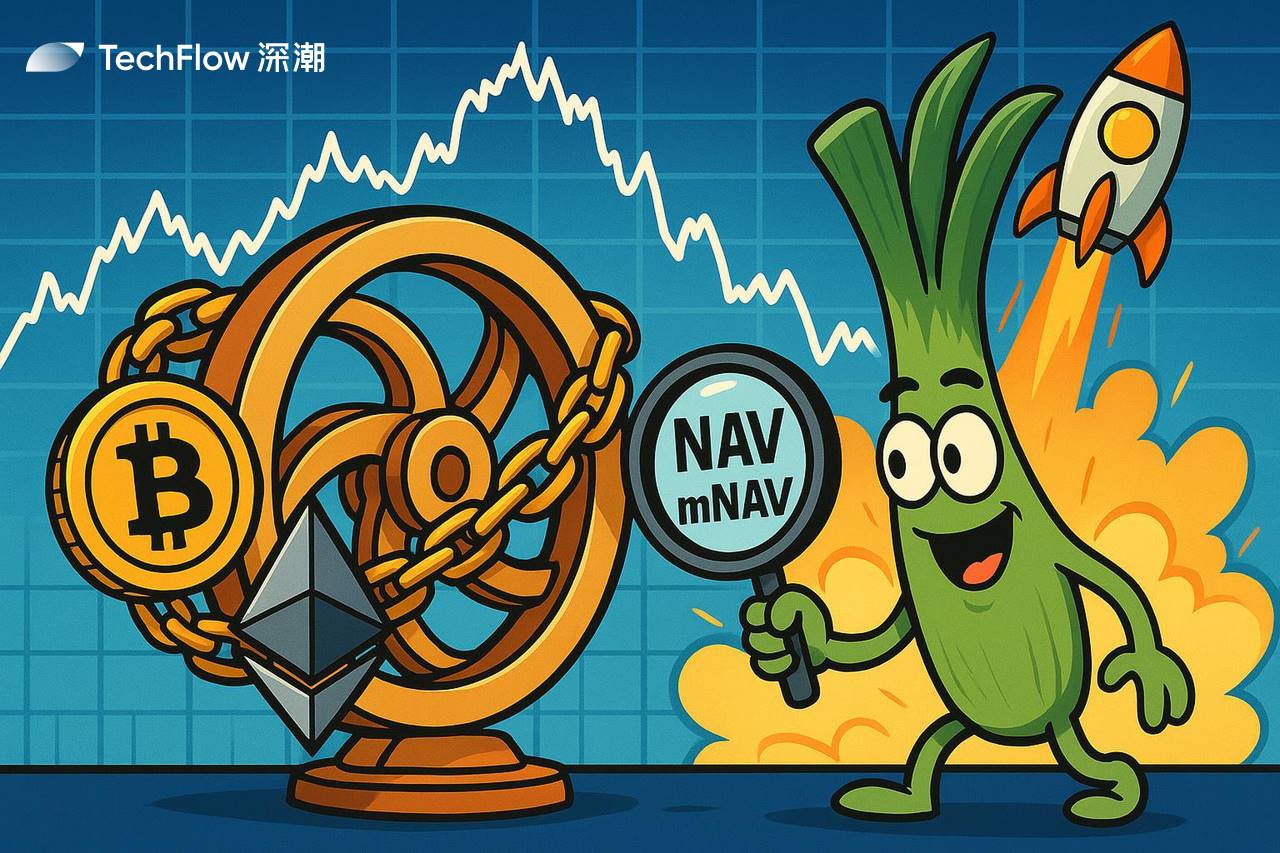
Undoubtedly, this round of the crypto bull market was first initiated in the U.S. stock market.
When the "crypto treasury reserve strategy" becomes the trendsetter in the U.S. stock market, and when cryptocurrencies and stocks are correlated, how should we evaluate the quality of a stock? Should we look at who has the largest amount of crypto assets in reserve, or should we consider who has the funds to continuously buy crypto assets?
If you have been frequently following analyses of crypto-related U.S. stocks recently, you might have come across a term that keeps appearing — NAV, or Net Asset Value.

Some people use NAV to analyze whether crypto stocks are overvalued or undervalued, while others compare the stock price of a new crypto reserve company with that of MicroStrategy; however, the more critical wealth secret lies in:
A publicly listed company in the U.S. stock market that implements a crypto reserve strategy and holds $1 worth of cryptocurrency has a value greater than $1.
These companies with crypto asset reserves can continue to increase their holdings or buy back their own stocks, leading to their market capitalization often exceeding their NAV (Net Asset Value).
However, for ordinary investors, most projects in the crypto space rarely use serious indicators for evaluation, let alone to assess the value of stocks in traditional capital markets.
Therefore, I also plan to do a popular science piece on the NAV indicator to help players interested in the correlation between cryptocurrencies and stocks better understand the operational logic and evaluation methods of crypto stocks.
NAV: How much is your stock really worth?
Before delving into the analysis of crypto-related U.S. stocks, we need to clarify a basic concept.
NAV is not an indicator specifically designed for the crypto market, but one of the most common methods for measuring company value in traditional financial analysis. Its essential function is to answer a simple question:
"What is the value of each share of a company?"
The calculation of NAV is very straightforward: it is the company's assets minus its liabilities, divided by the number of shares outstanding.


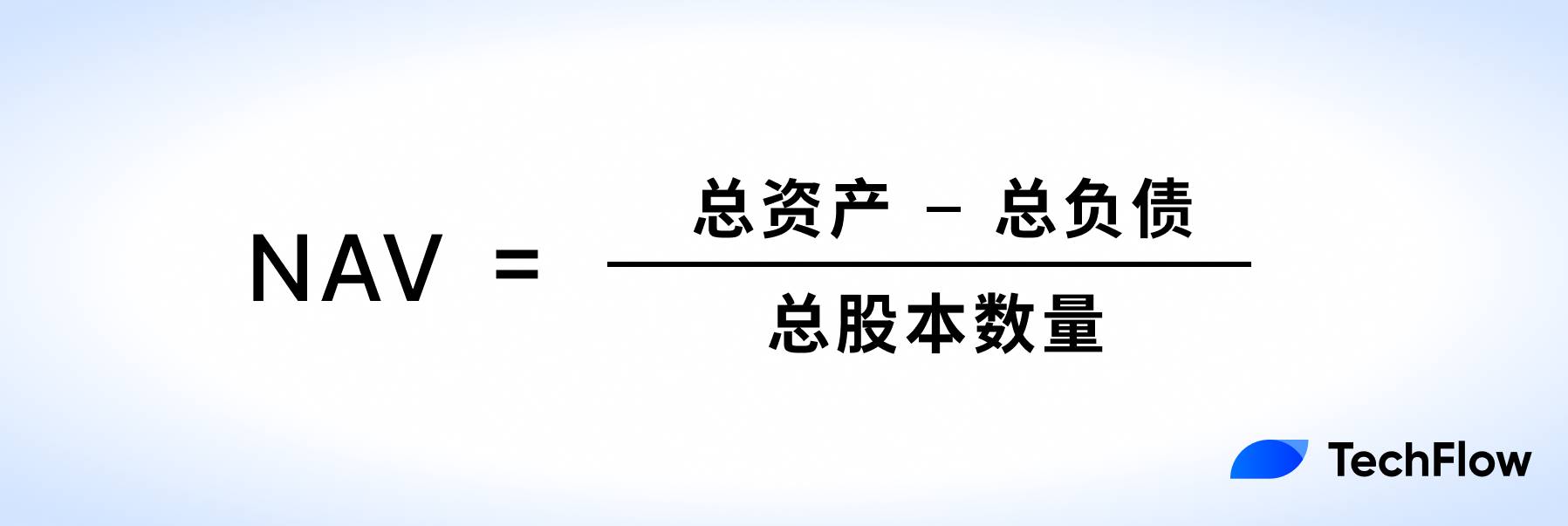
To better understand the core logic of NAV, we can illustrate it with a traditional example. Suppose there is a real estate company with the following financial situation:
Assets: 10 buildings, total value of $1 billion; Liabilities: $200 million in loans; Total Shares: 100 million shares.
Then the company's net asset value per share would be: $80/share. This means that if the company liquidated its assets and repaid all debts, each shareholder could theoretically receive $80 per share.
NAV is a very versatile financial metric, particularly suitable for asset-driven companies, such as real estate companies and investment funds. The assets these companies hold are usually quite transparent, and their valuations are relatively easy, so NAV can effectively reflect the intrinsic value of their stocks.
In traditional markets, investors typically compare NAV with the current market price of the stock to determine whether a stock is overvalued or undervalued:
If stock price > NAV: The stock may be at a premium, indicating that investors have confidence in the company's future growth potential;
If stock price < NAV: The stock may be undervalued, suggesting that the market lacks confidence in the company or that there is uncertainty in asset valuation.
When NAV is applied to crypto-related U.S. stocks, its meaning undergoes some subtle changes.
In the realm of crypto-related U.S. stocks, the core function of NAV can be summarized as:
Measuring the impact of a publicly listed company's crypto assets on its stock value.
This means that NAV is no longer just the traditional "assets minus liabilities" formula, but it needs to specifically consider the value of the cryptocurrency assets held by the company. The price fluctuations of these crypto assets will directly affect the company's NAV and indirectly influence its stock price.
For companies like MicroStrategy, the calculation of NAV particularly emphasizes the value of their Bitcoin holdings, as this portion of assets constitutes a significant part of the company's total assets.
Thus, the above calculation can be slightly extended:


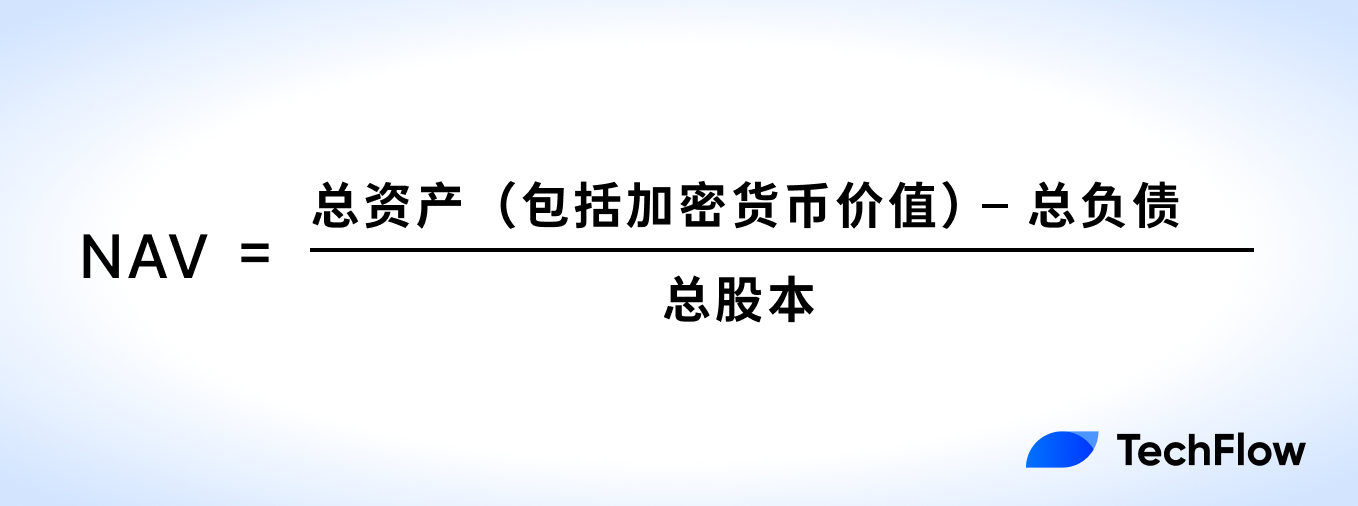
When crypto assets are included in the NAV calculation, some changes you must consider are:
NAV's volatility significantly increases: Due to the extreme price fluctuations of cryptocurrencies, NAV is no longer as stable as real estate or fund assets in traditional markets.
NAV's value is "amplified" by crypto assets: Crypto assets often command a premium in the market, meaning investors are willing to pay a price higher than their book value to purchase related stocks. For example, a company holds $100 million in Bitcoin assets, but its stock price may reflect the market's expectations for future appreciation of Bitcoin, leading to a market capitalization of $200 million.
When the market is bullish on Bitcoin's future price, the company's NAV may be assigned an additional premium by investors; conversely, when market sentiment is bearish, the reference value of NAV may decline.
If you still don't understand NAV, let's use MicroStrategy as an example.


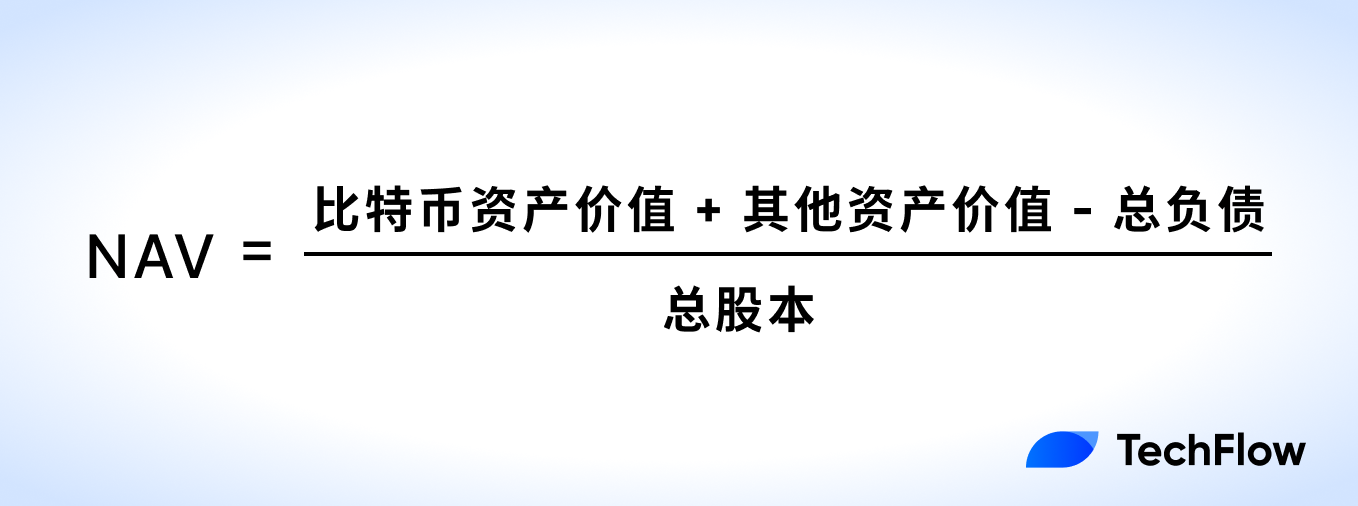
As of the time of writing (July 22), public data shows that MicroStrategy holds 607,770 Bitcoins, valued at approximately $117,903 each, with a total Bitcoin asset value of around $72 billion, and other assets worth about $1 billion, while the company's liabilities stand at $8.2 billion.
MicroStrategy's total shares are around 260 million, and according to the above calculation, its NAV is approximately $248 per share. This means that with BTC held as a crypto reserve, one share of MicroStrategy should be worth $248.
However, in the last trading day of the U.S. stock market, MicroStrategy's actual stock price was $426.
This reflects the market premium, indicating that if the market believes Bitcoin will continue to rise, investors will factor this expectation into the stock price, causing it to be higher than NAV.
This premium reflects that NAV cannot fully capture the market's optimistic expectations for crypto assets.
mNAV: The Crypto U.S. Stock Market Sentiment Gauge
Beyond NAV, you may also frequently see some analysts and KOLs discussing another similar indicator — mNAV.
If NAV is the basic indicator for measuring how much a stock is worth, then mNAV is a more advanced tool that aligns better with the dynamics of the crypto market.
As mentioned earlier, NAV focuses on reflecting the current net asset status of the company (mostly crypto assets) and does not involve market expectations for these assets; whereas mNAV is a more market-oriented indicator, used to measure the relationship between a company's market capitalization and its net value of crypto assets. Its calculation formula is:


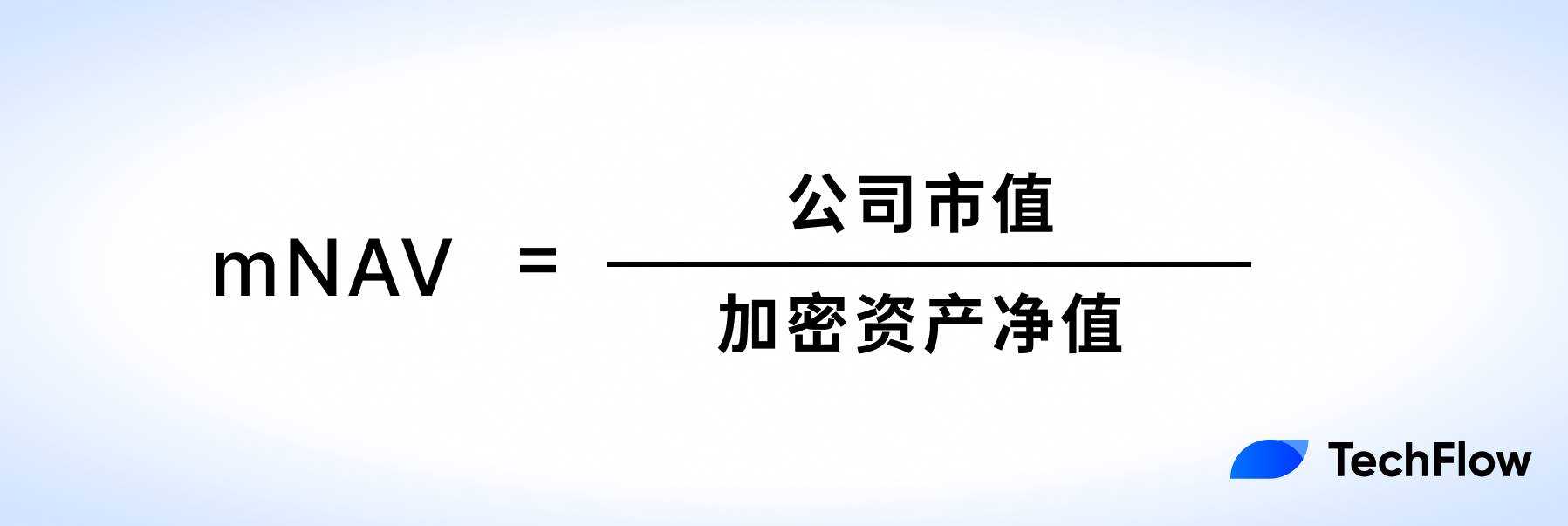
Here, "net value of crypto assets" refers to the value of the cryptocurrency assets held by the company minus related liabilities.
We can use a table to clearly compare the differences between the two indicators:
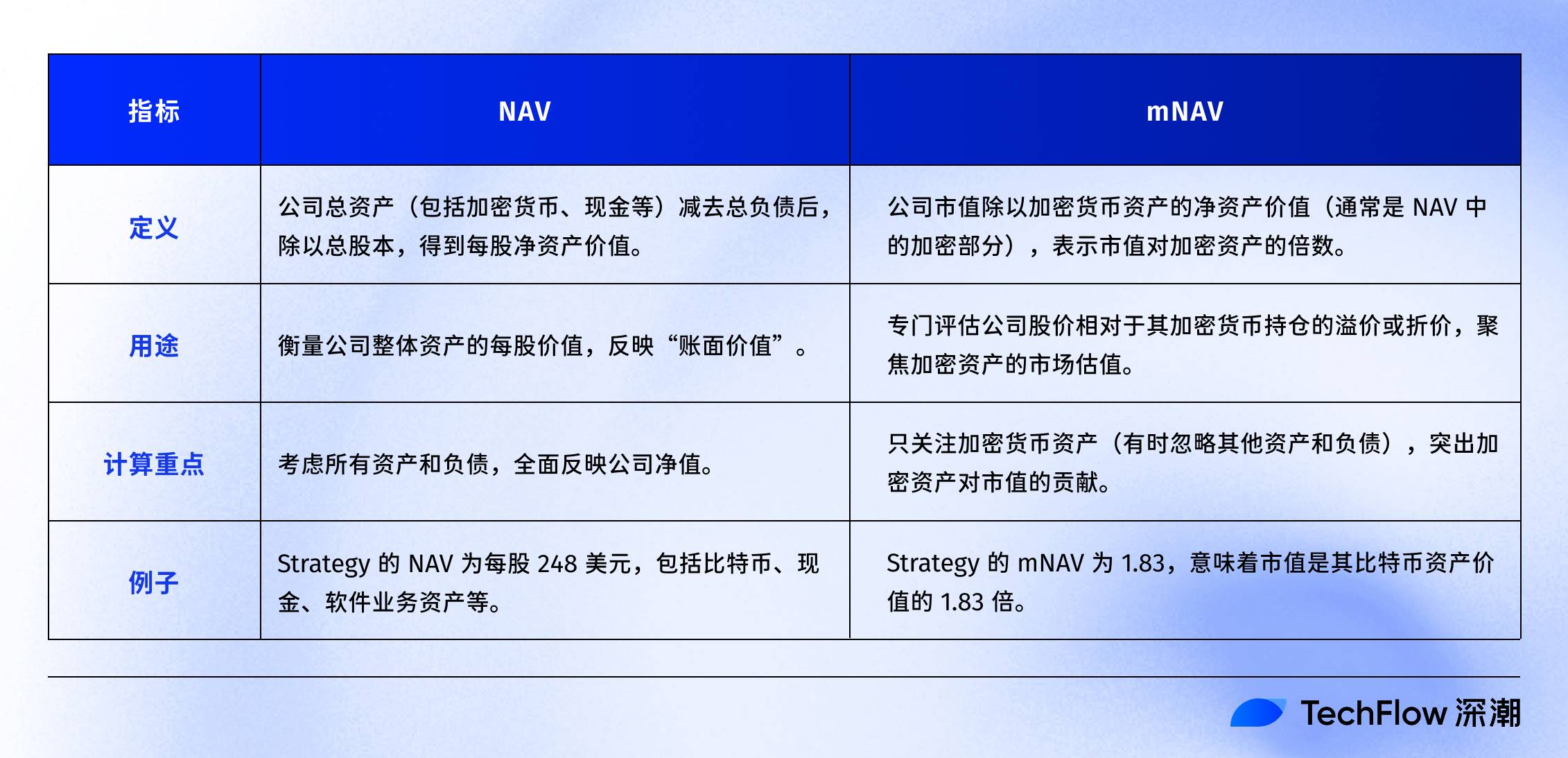
Following the previous calculations, MicroStrategy's total market capitalization is around $120 billion, while the net value of its BTC (crypto assets + other company assets - liabilities) is about $63.5 billion, making its mNAV approximately 1.83.
This means that MicroStrategy's market capitalization is 1.83 times the value of its Bitcoin assets.
Therefore, when a company holds a large amount of crypto assets, mNAV can better reveal the market's expectations for these assets, reflecting investors' premiums or discounts on the company's crypto assets; for instance, in the example above, MicroStrategy's stock price is at a premium of 1.83 times its net crypto asset value.
For short-term investors focused on market sentiment, mNAV is a more sensitive reference indicator:
When Bitcoin prices rise, investors may become more optimistic about the future performance of crypto asset-driven companies. This optimistic sentiment will be reflected through mNAV, causing the market price of the company's stock to exceed its book value (NAV).
If mNAV is greater than 1, it indicates that the market has a premium on the value of the company's crypto assets; if mNAV is less than 1, it means that the market lacks confidence in the company's crypto assets.
Premium, Reflexivity Flywheel, and Death Spiral
As mentioned earlier, MicroStrategy's mNAV is around 1.83;
As ETH increasingly becomes an asset reserve for publicly listed companies, understanding these companies' mNAV is also of significant reference value for identifying whether corresponding U.S. stocks are overvalued or undervalued.
Analyst @Jadennn326eth from Cycle Trading has compiled a detailed table that visually presents the asset-liability situation and mNAV values of major ETH reserve companies (data as of last week).
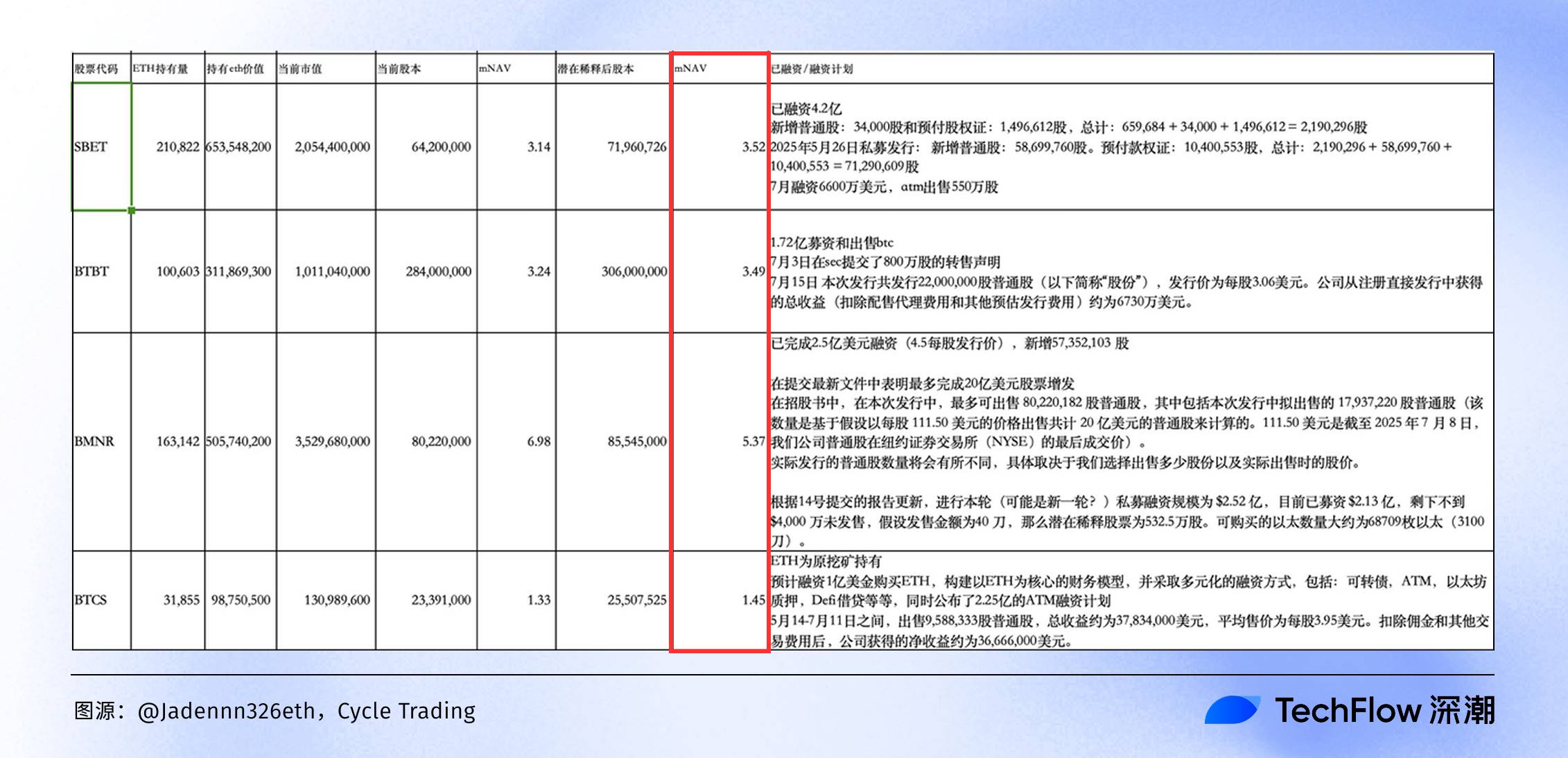
(Source: @Jadennn326eth, Cycle Trading)
From this comparison chart of ETH reserve companies' mNAV, we can quickly see the "wealth map" of crypto-stock correlation in 2025:
BMNR tops the list with an mNAV of 6.98, with a market capitalization far exceeding its ETH holdings, but this may hide an overvaluation bubble—once ETH corrects, the stock price will also be the first to suffer. In contrast, BTCS has a relatively low mNAV of 1.53.
Having seen the data of these companies, we must discuss the "Reflexivity Flywheel."
This concept originates from financial mogul George Soros's theory of reflexivity, which has become the "secret engine" behind the soaring stock prices of these companies in the crypto-stock correlation bull market of 2025.
In simple terms, the reflexivity flywheel is a positive feedback loop: The company first issues stock or raises funds through ATM (At-The-Market) financing, using the cash to buy ETH in large quantities; the increase in ETH holdings boosts NAV and mNAV, attracting more investors, causing the stock price to soar; a higher market capitalization makes it easier for the company to refinance and continue increasing its ETH holdings… thus forming a self-reinforcing, snowball-like flywheel effect.
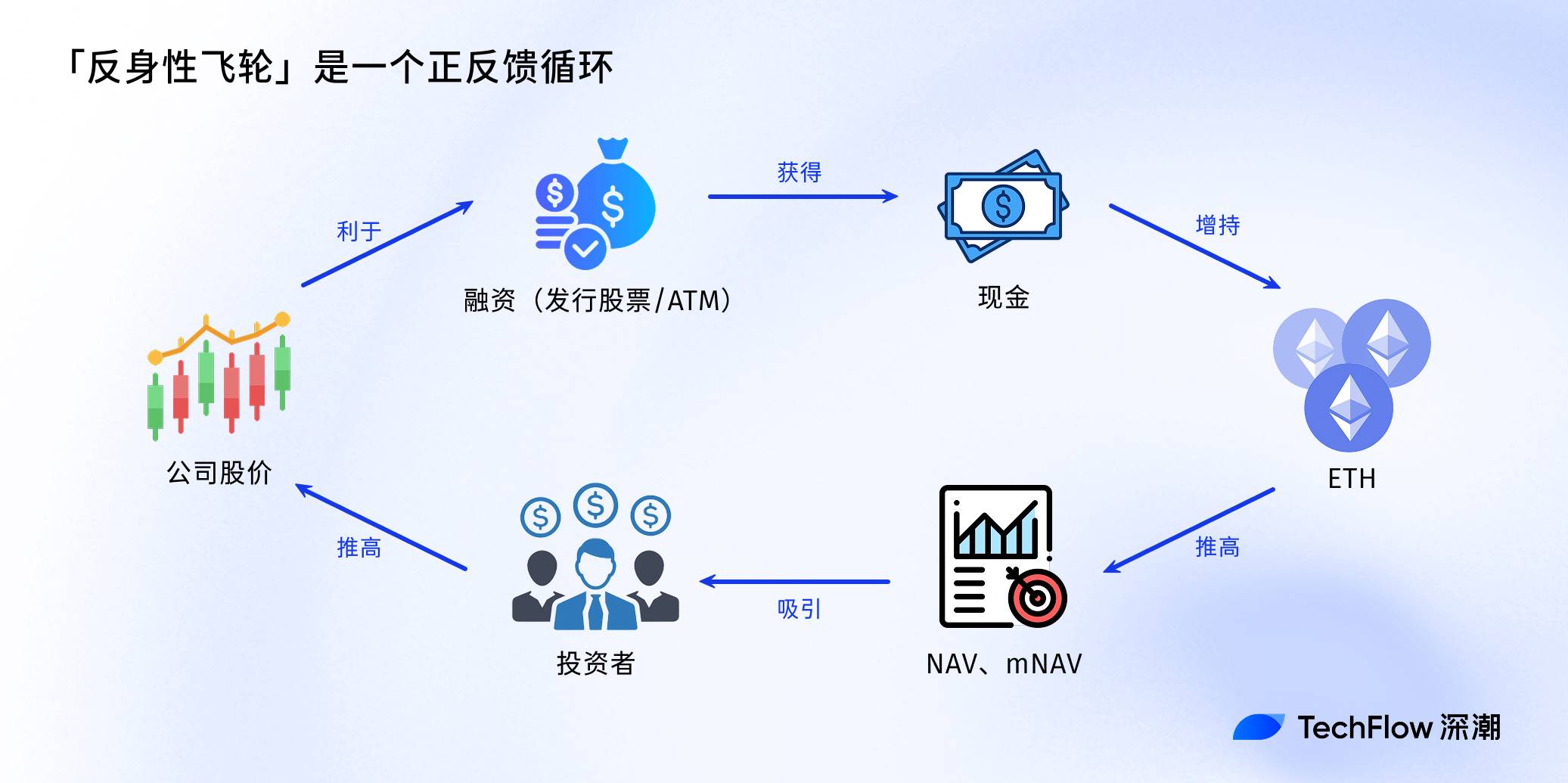
However, if the price of ETH corrects, regulations tighten (such as the SEC's scrutiny of crypto reserve models), or financing costs soar, the ascending flywheel may reverse into a death spiral: stock prices collapse, mNAV plummets, and ultimately, it may be the retail investors in the stock market who get hurt.
In conclusion, by now you should understand:
Indicators like NAV are not a panacea, but rather powerful tools in the toolbox.
As players chase the correlation between cryptocurrencies and stocks, combining the macro trends of Bitcoin/Ethereum, the company's debt levels, and growth rates for rational assessments will help them find their own opportunities in a new cycle that seems full of opportunities but is actually fraught with danger.
免责声明:本文章仅代表作者个人观点,不代表本平台的立场和观点。本文章仅供信息分享,不构成对任何人的任何投资建议。用户与作者之间的任何争议,与本平台无关。如网页中刊载的文章或图片涉及侵权,请提供相关的权利证明和身份证明发送邮件到support@aicoin.com,本平台相关工作人员将会进行核查。




